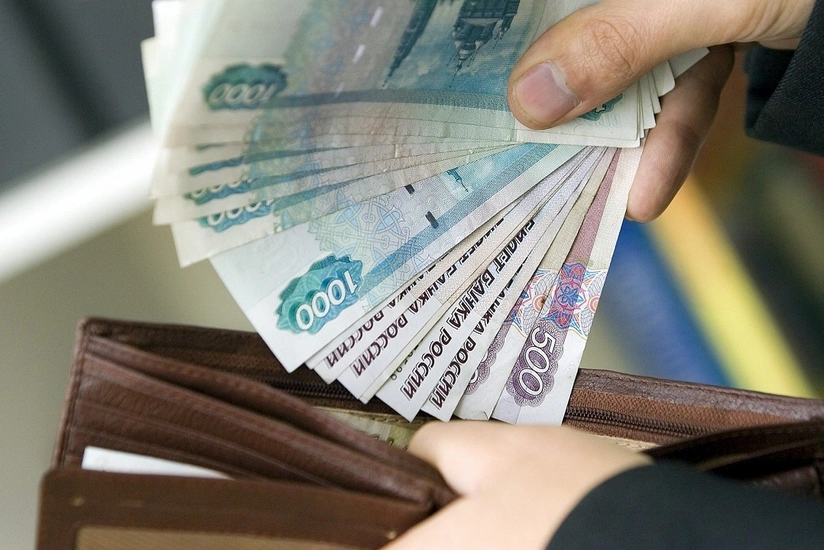How long will the ruble strengthen?
- 04 April, 2022
- 16:20

In response to the war against Ukraine that began on February 24, the United States and the European Union (EU) began imposing tough sanctions against Russia. The first target was the Central Bank of Russia. About half of its assets and international reserves were frozen. We are talking about funds equivalent to about $300 billion. Before the war, the regulator used these reserves to support the ruble.
At the same time, the country's systemically important banks were disconnected from SWIFT, and the EU completely closed the airspace for Russia. Immediately after that, the ruble depreciated sharply against the US dollar and the euro. There was no such situation either during the crisis of 2008 or after the annexation of Crimea in 2014. The exchange rate of the ruble against the US dollar from the pre-war 75 rubles reached a historical maximum of 143 rubles on March 7. At that time, the exchange rate on the “black market” had long been above 200 rubles. But since mid-March, the Russian ruble began to strengthen against the US dollar and the euro, and the official exchange rate today is about 83 to 92 rubles, respectively.
The 40th day of the “special operation” that Russia is conducting on the sovereign territory of Ukraine is already underway. Unprecedented sanctions were imposed against our northern neighbor. As of February 22 (February 21, Russia recognized the so-called republics established on the sovereign territory of Ukraine), 2,754 sanctions were in force against Russia. As of March 8, 2,778 sanctions have been imposed. In terms of the number of sanctions, Russia has bypassed Iran, Syria, North Korea, Venezuela, Myanmar, and Cuba. Russia actually found itself outside the global financial system.
To date, about 500 foreign companies have announced they are leaving the country due to sanctions. Many of them are companies that are partners in joint ventures, deeply integrated into various sectors. Since the start of the war, weekly inflation in the country is about 2%. Since the beginning of March, prices have increased by 5.38%. Against the backdrop of what is happening, the ruble is strengthening day by day. The main factors behind the strengthening of the ruble were already formed in the first days of the sanctions. Thus, the Bank of Russia more than doubled the discount rate, bringing it to 20%. This step was aimed not only at making loans more expensive but also at making savings in the national currency more attractive.
As a result, in the decade of March, the average maximum rate of deposits in rubles reached a historic maximum. On the other hand, they forced exporters to sell 80% of their foreign exchange earnings. Although energy exports have declined in volume, high oil and gas prices continue to provide the country with sufficient foreign exchange earnings. Due to sanctions, imports in March fell by 30%. That is, the demand for dollars and euros from importers has decreased. Thus, the trade surplus becomes an additional factor supporting the national currency.
Instruments of administrative influence of the Bank of Russia also play an important role in strengthening the national currency. The regulator banned banks from selling dollars and euros to the public, and non-residents from selling shares they purchased on the domestic market. All this actually led to a sharp decline in demand for dollars and euros. It is demonstrated to the domestic audience that the national economy is not shaken by the sanctions. On the other hand, a strong ruble will help to minimize sharp inflationary shocks. But the further strengthening of the ruble may be impossible under the influence of a number of factors. Basically, this can happen as a result of a sharp decline in oil and gas revenues due to the loss of traditional supply markets.
Fearing sanctions, buyers have effectively opted to stay away from Russia. Russian oil is becoming a “toxic” fuel. Finding a buyer, even offering big discounts, is becoming difficult. In just a week (March 17-23), oil exports fell by 26%, to 3.63 million barrels per day. a large volume of oil, so the company has imposed restrictions on the intake of raw materials from extractive companies. Although Europe, the main market for the supply of Russian "blue fuel", is not completely abandoning Russian gas, the process is moving in this direction. The Baltic countries have already abandoned Russian gas. Bulgaria and Poland will not renew contracts with Gazprom.
Footage of the massacre of civilians in the Ukrainian settlement of Bucha, liberated from the Russian military, shocked the entire world community, including the leaders of Germany, Italy, and France. The embargo against the oil and then the gas sector is now more real than ever. This will have dire consequences for Russia, where about 40% of budget revenues come from the oil and gas sector.
